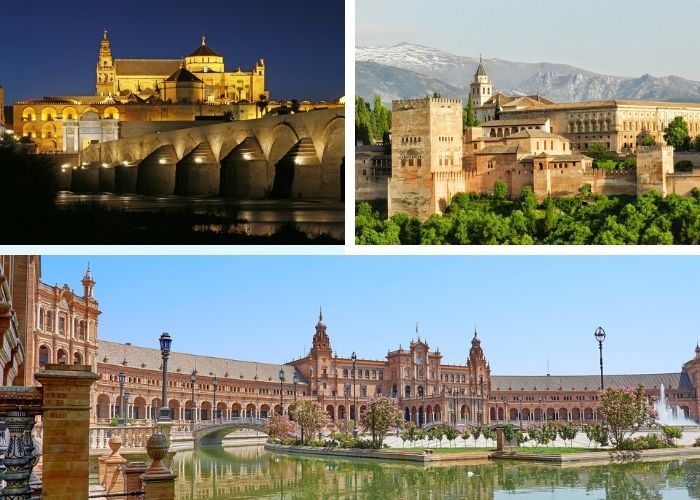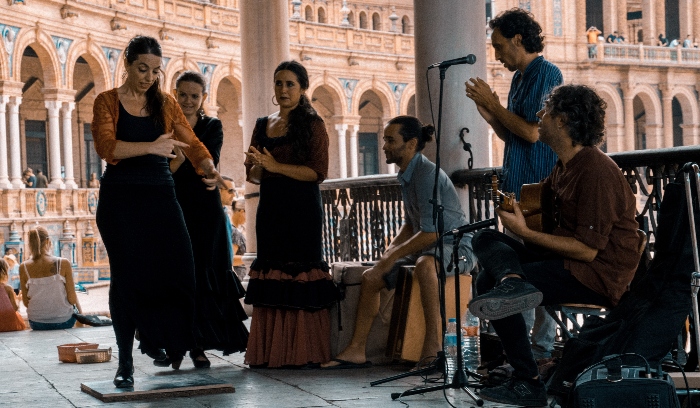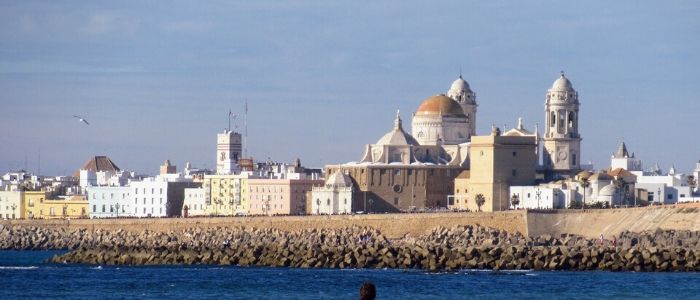Comments
mood_bad
No comments yet.
chat
Official UK partner to the Paradors, Pousadas, Pestana Hotels & Resorts, Les Collectionneurs (Chateaux), and European Hotels Collection. Keytours International, formerly Keytel International, your agent in the UK.
Andalucia, one of Spain’s largest and most popular regions, is also one of its warmest with a pleasant climate in spring and autumn, making it ideal for visitors wishing to avoid the high temperatures of peak summer. Winter is also a very attractive season to travellers because of this mild climate, with frequently warm middays and morale-boosting luminosity to enjoy at a time when many northern countries are cold and wet. The nights close in earlier in winter but with fewer crowds you can enjoy the iconic famous landmarks of this region with more space and peace, such as the Alhambra in Granada, the Mezquita (mosque-cathedral) in Córdoba, the Plaza de España in Sevilla (not forgetting La Giralda bell tower, the Cathedral and the Alcázar) and the wonderful historic centres that make these cities so compelling to explore for several days at a time. Add to these the wonderful plazas in Málaga with their orange trees, the impressive structures of each city’s bullring, the Moorish arches in all directions, the lasting influence of 3 major religious civilizations – Christian, Jewish and Muslim – and you are presented with a ready-made diary of cultural attractions to take in.

Andalucia truly is a land of many treasures, some say that Cádiz is one of Andalucia’s jewels, or that Jerez truly best represents the region whilst others encourage you towards the enormous olive grove territories at the heart and east of Andalucia. Others still would encourage you to take in the extensive landscapes of orange groves and the mountains of the Sierra Nevada and other major ranges bordering the coastline.
Gastronomically this beautiful region ticks all the boxes with its coast serving up Mediterranean fish, seafood and Atlantic tuna, its orchards providing vegetables and fruits (from the common to the exotic), and its claims to having the most famous wine in the world can be disputed all day in the shade of a tree whilst drinking equal amounts of Sherry and cool mineral water, accompanied by some delicious jamón and melon to set the perfect scene.

Culturally much of Spain’s identity is often associated with the culture of this region, where Flamenco and Sevillana dances get mixed up in the minds of tourists into a heady, sometimes aggressive, sometimes passionate dance of darkly dressed gypsy characters. The swirling of pretty dresses in the Sevillana dances captures our minds with the very compelling sound of guitar music and voices to accompany.
Archaeologically, the region is hugely rich in sights that will occupy you for weeks of exploration if you have the time. The Roman theatre in Málaga, quietly and unassumingly set alongside the pedestrian streets of the heart of the city, the Roman bridge of Córdoba which many of us cross simply for the pleasure of appreciating its substance and significance, and the ruins of temples scattered around the region are all testament to the Romans’ occupation of Spain. However, you could controversially argue that the Moors made more impact on the region we see today because of their influence on the cuisine using herbs and spices, the irrigation of the drier regions converting them into productive agricultural centres for fruit and vegetables all year round (remember the first strawberries of February and March on our shelves?), and particularly the architecture – the way that the Moorish style is blended with others or sits alongside other building designs in a complimentary fashion. When standing in the centre of many cities in Andalucia, you will not fail to appreciate the Moorish influence surrounding you.

The isthmus of Cádiz fascinates visitors whilst the rooftops of the old city are a wonderful sight, again blending Christian, Jewish and Moorish architecture into a colourful, eye-catching mosaic. Look along the coast, taking in the beautiful bays, and it is hard to resist pausing in a cafe or restaurant terrace to enjoy the views.
By night these cities remain alive and bright all year round, and whilst you might enjoy lunch alfresco in the winter, you might equally enjoy the attractively detailed interiors of a Meson or restaurant in the evening, often with hand-painted tiles and decorative bricks. And if the weather is chilly, it gives you an ideal excuse to enjoy a coffee or two afterwards (with or without Brandy).
Because of its appeal all year round, and the opportunity to enjoy its terraces throughout the day in the winter and in the evenings of autumn and spring, you can truly feel at home in this famous region with fewer tourists to get in your way and shorter queues (if you are unlucky enough to find a queue!)